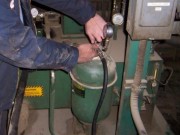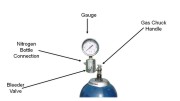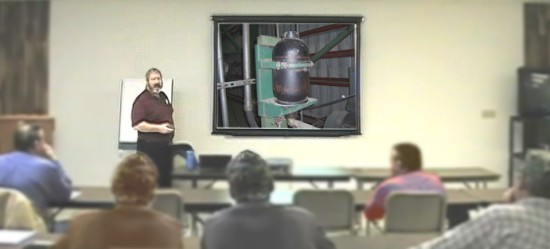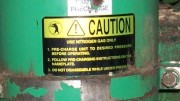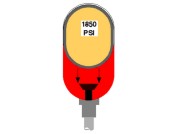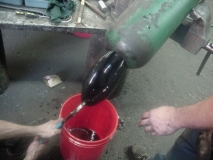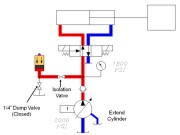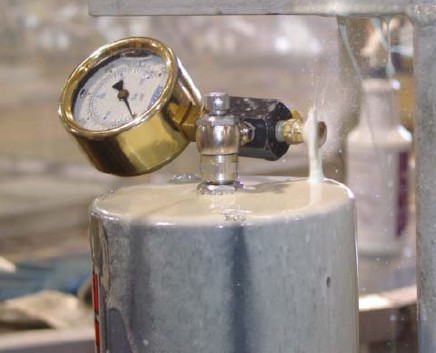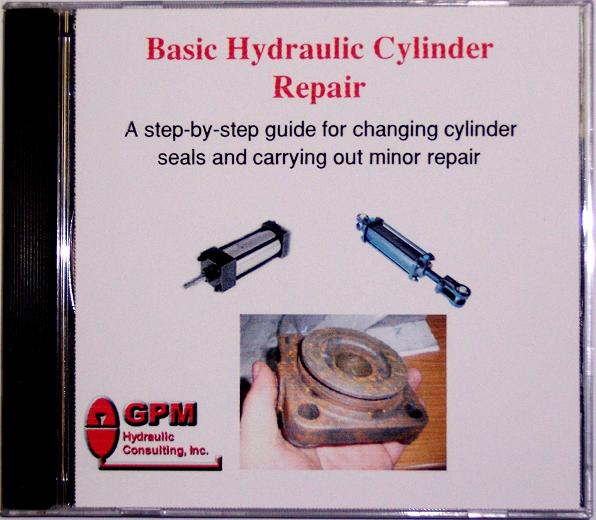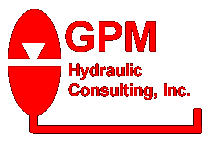
P.O. Box 1376
Monroe, GA 30656
(770) 267-3787 gpm@gpmhydraulic.com
For an archive of past newsletters, please visit:
http://www.GPMHydraulic.com/newsletter_archive/
CLICK HERE to send this newsletter to a friend!
|
'Troubleshooting Hydraulics' Newsletter |
||||
|
||||
|
In This Issue |
||||
|
2. What You Don't Know About Hydraulic Accumulators Can KILL You! ***NEW!*** Accumulator Safety DVD 3. Will Reducing My Viscosity Reduce Operating Temperature? 4. Call GPM for Emergency Hydraulic Troubleshooting 5. 2010 Public Maintenance Hydraulic Troubleshooting Workshop Schedule |
 By Jack Weeks
By Jack WeeksTo Date, Our Most Dramatic System Flushing Result
For years, we have spoken ad nauseum of the benefits of keeping hydraulic oil clean. Everyone agrees in theory that it's important. But in practice, flushing the hydraulic system usually takes a back seat to more pressing issues. That is, until the oil is so badly contaminated that the machine can't run. Suddenly, cleaning the oil becomes a top priority. Such was the case recently with a boat hoist in Virginia. Now, when I say "boat hoist", most people think of a device that picks our boat off the trailer we have hitched to our pickup truck and puts it in the water at a marina with no boat ramp available. The boat hoist I'm talking about here is somewhat more impressive:
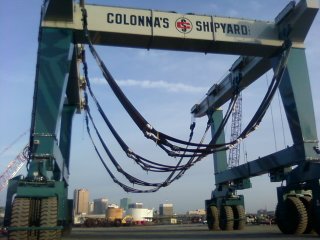
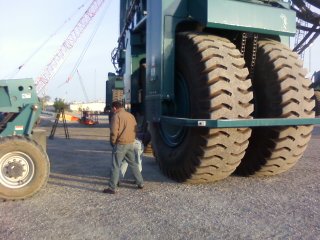
A single bolt on this machine weighs 3 pounds and there are 1500 - 1700 bolts on one of these hoists, depending on the model. Obviously, they are too large to ship assembled, so when they are delivered they are built on site. As with any field assembly, many opportunities arise for contaminants to enter the hydraulics. Such was the case here as well - once the assembly was complete, the hydraulics would not function because of trash in the oil.
An internet search located our machine, the GPM 120:
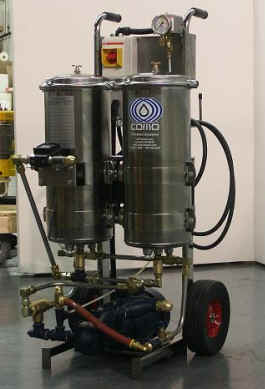
Diminutive though our little flushing machine may appear next to this enormous hoist, within twelve hours of flushing the oil was pristine and the hoist was in full operation. The customer is now considering including one of our flushing machines with each hoist that is purchased.
The Single Most Effective Move You Can Make to Reduce Hydraulic-Related Downtime
The vast bulk of hydraulic problems are the result of contaminated oil. In my years of consulting, it is a rare hydraulic failure I have ever found that could not be traced directly to improper care of the fluid. In theory, a hydraulic machine can never suffer any wear. Metal never touches metal - every surface in every component is separated from its mate by a thin lubricating film of hydraulic oil. Tight though it may be, there is always a tolerance, usually about 0.002 - 0.003" between any two surfaces. But in practice, though the two surfaces never touch each other, both surfaces are in contact with something else - contaminants. It is almost always these contaminants that cause the wear and eventual failure of the components.
Where Does the Contamination Come From?
There are actually four ways hydraulic machines are contaminated:
- New Oil - Most people think that new oil is clean and can be poured directly into a hydraulic machine. It isn't. It probably was when it was refined. The trouble is that the refinery is not onsite. It has to get to you somehow. It goes through pipes, hoses, gets transported in tanker trucks and packaged. By the time it arrives at your plant, it must be filtered before it goes in the tank. If you doubt this, next time you open a container of new oil, get a flashlight and look at it. There are probably visible contaminants in the oil. If you can see it, it is much too large to go in a hydraulic machine.
- Built-In Contamination - Most new hydraulic machines will come complete with their own contaminants at no extra charge. These can be in the form of metal chips, dirt, sand, pipe sealant, burrs, dust, weld splatter and paint (and sometimes cigarette butts, welding rods - we've even found a pair of tennis shoes left in a reservoir. Fortunately, there were no feet in them...)
- Contaminants from Outside the Machine - There are four common paths of ingress for outside contaminants to enter the machine: the breather cap, the access plates, cylinder seals and the biggest one, hose and component replacement.
- Generated Contaminants - As if all of that were not enough, the machine will generate its own contaminants as it operates. When contaminants are introduced by the means above, they will lodge between the tight tolerances of the machine and wear away at the components. Where does that metal go? Downstream, of course, multiplying the damage.
Flushing the Machine
Flushing is not a complicated procedure. The first step is to transfer the oil to a separate container. On our flushing machines, there is a "transfer" mode and a "filter" mode. Obviously, it can transfer oil faster than it can filter it. Once the oil is in a separate container, connect the flushing machine to the container and switch it to the "filter" mode so it can be cleaning the oil while the reservoir is manually cleaned. Clean the reservoir inside until you would be comfortable eating dinner off of it. Remove all visible contaminants, sludge and slimes with a disposable, absorbent lint-free cloth desgned for such work.
Usually, by the time this is done, the oil in the separate container has had time to make at least one pass through our flushing machine. We use dual 1-micron filters that clean the oil to an unnaturally clean state. This ultra-clean oil is now a powerful solvent. Transfer it back into the reservoir and put the system online letting it do whatever it does. Connect the flushing machine to the reservoir so that it circulates while the system is in operation. The ultra-clean oil will travel through the machine, picking up varnishes, slimes and attached contaminants that have been present for years, bringing them back to the reservoir where they are removed from the oil by the flushing machine.
There is no downtime involved other than the time it takes to clean the reservoir. Since it cleans the entire system and all of the oil in it, the results are much better than can be achieved by simply changing the oil. Does it really work? Ask anyone who has ever used it. We can provide as many references as you like.
|
Not exactly. Viscosity lowers with temperature. If you put a lower viscosity oil in your machine than it needs, high ambient temperatures will thin it even more. The result will be inadequate lubrication, increased friction and reduced volumetric efficiency (actual output of oil to do the work that makes the money) of the pump. If anything, the viscosity should be increased during the summer.
Your OEM has specified the viscosity range that your machine needs. They do this using what they call the TOW method. TOW stands for "Temperature Operating Window". A fluid with a TOW that corresponds to the reservoir temperature will provide satisfactory viscosity results.
So does this mean that you need to stock a different viscosity oil for every machine? Of course not. That's where the "Window" part of the TOW comes in. There is a fluid out there that can accommodate most, if not all of your machines. You can spend a lot of time and money learning about TOWs and the needs of your machine, but it's not necessary. You already have a resource for determining the best fluids to use for free - your oil vendor.
Recently I spoke at an Exxon-Mobile reliability symposium in Philadelphia. Working on the premise that I have two ears and one mouth, I spent considerably more time listening to some of the experts there than I did speaking. Some of these guys are absolute gurus about lubricants and fluids. Make use of their expertise to keep your machines running as reliably and efficiently as possible.
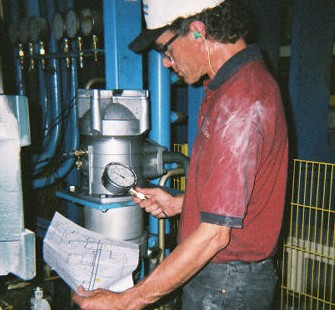
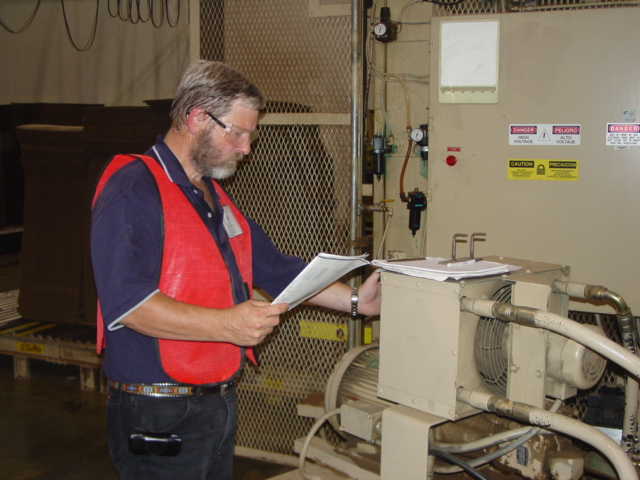
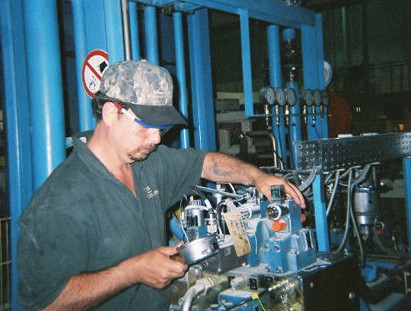
Nothing is more expensive than unscheduled down time. GPM’s customers know they can call whenever they have a troubleshooting issue they simply can’t resolve. With over 50 years experience dealing with hydraulic failures, our consultants have the resources to help troubleshoot whatever hydraulic problem you encounter. Whether you’re experiencing a total system outage, repeated component failure or just need a professionally designed preventive maintenance schedule, the consultants at GPM can help. Call GPM for
In-plant Troubleshooting
Leakage Problems
Pressure Settings
Shock Problems
Preventive
Maintenance Scheduling
Hydraulic Troubleshooting Manual Development
Startup
Consulting and Recommendations
Heat
Problems
Repeated
Component Failures
Speed Problems
Do you want to learn more about how GPM can help you? Go to http://gpmhydraulic.com/troubleshooting.htm
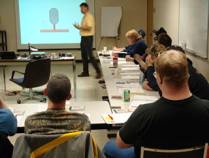
Maintenance Basic Hydraulic Troubleshooting
2009
3 Day Workshop
Registration
Fee Only $895.00 Per Person
Three
for the Price of TWO!
Every Third Registrant Attends for FREE!
Early Registration -
$845.00 For Confirmed Reservations
Booked 21 Days Prior to the Start of the Workshop
Call (770) 267-3787 To Register
Learn More About Our Maintenance Basic Hydraulic Troubleshooting Course
2010 Maintenance Basic Hydraulic Troubleshooting Schedule
Date
*Don't see your city listed? Call If You Would Like To See A Workshop Scheduled In Your Area!
(770) 267-3787
If you've found our newsletter informative and beneficial please click here to tell your co-workers and friends.
A step-by-step guide for changing cylinder seals and carrying out minor repair. The manual contains disassembly, inspection of parts, minor repair, assembly, examples of seal failures and their causes, hydraulic cylinder speeds, metric/inch conversion table, fluid power formulas, rod and piston groove diameters.
$24.99 + Shipping & Handling
Site Index
[Home] [Our Training] [Hydraulic Consulting] [Safety Webinars] [System Flushing] [Our People] [Downloads and Multimedia] [Testimonials] [Hydraulics Quiz] [GPM Store] [Upcoming Events] [Contact Us]
GPM Hydraulic Consulting,
Inc.
Box 1376
Monroe, GA 30655
(770) 267-3787



